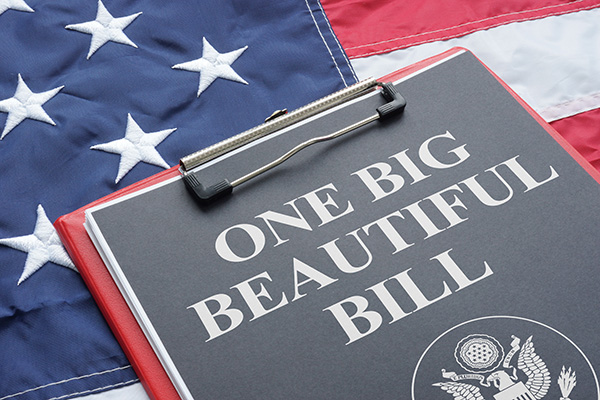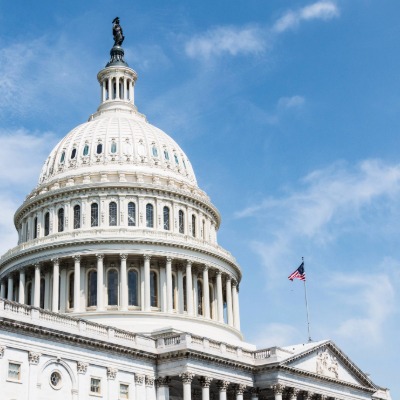Where Things Stand: The Legislative Path of the One Big Beautiful Bill Act

The Senate has unveiled its version of the One Big Beautiful Bill Act (OBBBA), a sweeping tax and spending proposal that sets the stage for high-stakes negotiations. From making lower income tax brackets and the Qualified Business Income (QBI) deduction permanent to enhancing the Child Tax Credit and significantly increasing the estate and gift tax exemption, the bill signals major potential changes to the federal tax code.

2025 Year-End Tax Guide: Navigating the One Big Beautiful Bill Act
Make the most of the tax code before 2026 changes take effect. Our 2025 Year-End Tax Guide offers a concise checklist. Use it to evaluate your opportunities, coordinate with your tax and financial advisors, and position your portfolio for the years ahead.
Although the House already passed its version, the Senate has not yet held a vote. If the Senate passes an identical version, the process becomes relatively straightforward: the Constitution’s Presentment Clause allows Congress to send the bill directly to the president for signature. But that outcome is unlikely. Early signs suggest that the Senate’s version will diverge from the House’s on several fronts, including controversial provisions such as the State and Local Tax (SALT) deduction cap and proposed Medicaid payment limits.
Under the Constitution, both chambers must pass the exact same bill before it can become law. If the Senate’s version differs, the process enters the next phase: a series of amendment exchanges between the House and Senate—informally known as “ping-ponging.” In this process, each chamber proposes changes to the other’s version until both sides agree on a single, unified text. If they can’t reach agreement, the leaders may form a temporary conference committee—comprised of senators and House representatives to negotiate a compromise. The final version produced by that committee must then pass both chambers without further amendment before moving to the president’s desk.
Before any of that can happen, however, the Senate must complete a key procedural step: reconciliation review, and specifically, compliance with the Byrd Rule. Because OBBBA is advancing through the reconciliation process—which allows certain budget-related legislation to pass with a simple majority—it must meet strict rules that limit what kinds of provisions lawmakers can include. The Byrd Rule prohibits any measure deemed “extraneous” to the federal budget, including those that do not impact spending or revenue, increase the deficit beyond a 10-year budget window, or make structural changes to Social Security.
Senate Parliamentarian Elizabeth MacDonough is responsible for that determination and is currently reviewing the bill line by line in what’s informally known as a “Byrd bath.” This procedural review goes beyond technicalities—it is already reshaping the bill before it even reaches the Senate floor. Over the past few days, the process has stripped several high-profile provisions. These include language allowing states to carry out immigration enforcement, proposals limiting courts’ contempt powers, new restrictions on noncitizen eligibility for Supplemental Nutrition Assistance Program (SNAP) benefits, and a base-level funding cap for the Consumer Financial Protection Bureau.
While this stage may appear procedural, it has real policy implications. What survives the Byrd bath determines not only what the Senate can vote on but also what the House can ultimately negotiate. In this way, reconciliation doesn’t just streamline the legislative process—it narrows what’s legislatively possible. While the Senate could technically vote to override a Byrd Rule challenge through a point of order, doing so would require 60 votes—making such outcomes extremely rare.
As the Byrd bath concludes and the Senate prepares for a vote, the bill’s path forward will depend on whether the two chambers can reconcile their versions. If they reach an agreement—either through amendment exchanges or a conference committee—the bill could still make it to the president’s desk before the July 4 recess. If not, negotiations may extend further into the summer.
For taxpayers, advisors, and estate planners, the key takeaway is this: the final shape of OBBBA remains uncertain. At Savant, we’re closely monitoring each stage of the legislative process and will be ready to help clients respond—no matter what version ultimately becomes law.
Sources:
https://www.budget.senate.gov/ranking-member/newsroom/press/senate-parliamentarian-advises-several-provisions-in-republicans-one-big-beautiful-bill-are-not-permissible-subject-to-byrd-rule
https://www.budget.senate.gov/ranking-member/newsroom/press/several-additional-provisions-in-republicans-one-big-beautiful-bill-are-subject-to-60-vote-threshold-according-to-senate-parliamentarian
https://www.budget.senate.gov/ranking-member/newsroom/press/more-provisions-in-republicans-one-big-beautiful-bill-are-subject-to-byrd-rule-parliamentarian-advises
https://www.budget.senate.gov/ranking-member/newsroom/press/provisions-continue-to-violate-the-byrd-rule-in-the-republicans-one-big-beautiful-bill
https://www.budget.senate.gov/ranking-member/newsroom/press/one-big-beautiful-bill-has-more-provisions-that-violate-the-byrd-rule-according-to-senate-parliamentarian
https://www.pgpf.org/programs-and-projects/fiscal-policy/understanding-complex-budget-terms-and-processes-and-why-they-matter/#byrd-rule
https://abcnews.go.com/Politics/big-week-trumps-big-beautiful-bill/story?id=123123250
https://epicforamerica.org/federal-budget/the-byrd-rule/#:~:text=Points%20of%20Order,ruling%20by%20the%20Presiding%20Officer

